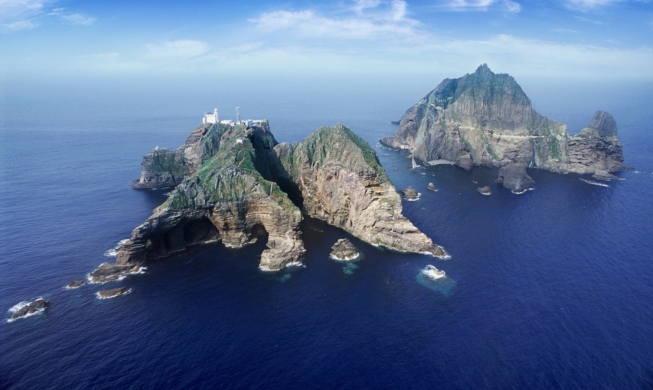- 한국어
- English
- 日本語
- 中文
- العربية
- Español
- Français
- Deutsch
- Pусский
- Tiếng Việt
- Indonesian
By Honorary Reporter Jianping Sun from China
Photos = Jianping Sun
The Korean Cultural Center in Shanghai, China, through May 4 hosts the exhibition "Provisional Government of Korea: Deep Roots in Shanghai" to mark the 105th anniversary of the Korean Provisional Government (KPG).
This event highlights the Korean independence movement in Shanghai following the March 1 Independence Movement of 1919, activities of the KPG in China and the latter's historical journey from Chongqing to Shanghai and finally back to Korea after national liberation in 1945.
I attended the event on March 28. I learned about the event through the social media account (WeChat) of the Korean Cultural Center in Shanghai. Being born and raised in Shanghai, I have always been interested in the strong historical connections between Korea and Shanghai. I wanted to explore these historical links further. A couple of months ago, I also visited the resting place of the forefathers of the Korean independence movement in Shanghai. They dedicated their lives to the independence and rejuvenation of Korea, which is something worth remembering and sharing. Personally, as a Chinese citizen with non-biological Korean parents who have embraced me as their own child and supported my education in the US, I believe that exploring the historical links between our two countries holds symbolic meaning. Therefore, I would recommend this event to people from both countries who are interested in understanding and appreciating the shared history and sacrifices made for the greater good.
Three aspects of the exhibition left a lasting impression on me.
After Japan annexed Korea in 1910, pro-independence sentiment began in Shanghai and the 1919 movement led to the founding of the KPG. Over the next 27 years, the KPG persevered through numerous crises and several relocations across China.
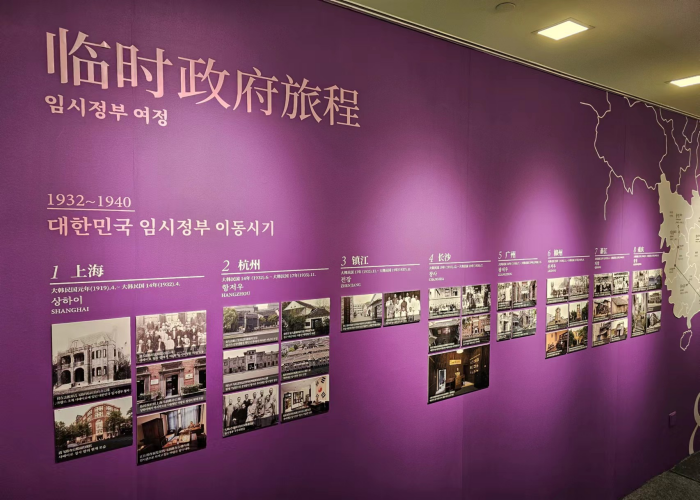
The KPG had to relocate several times in China.
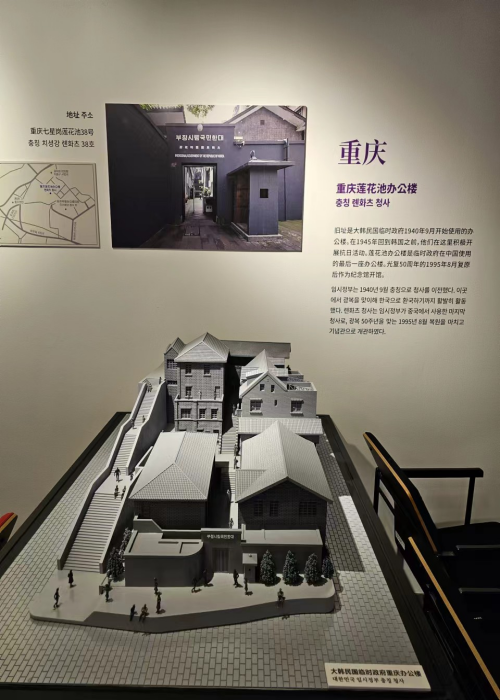
This is a miniature of the KPG's building in Chongqing, China.
The KPG leadership underwent an evolution in experimenting with systems using a prime minister, president, minister, and presidential and councils. Moved to Chongqing in 1940, it pursued diplomatic and military efforts for recognition and independence for Korea.
The Korean Liberation Army in September 1940 was formed in Chongqing and the KPG in December 1941 declared war on Japan and joined the Allies. Through diplomatic efforts, the KPG received global recognition of Korea's independence through the Cairo Declaration of December 1943.
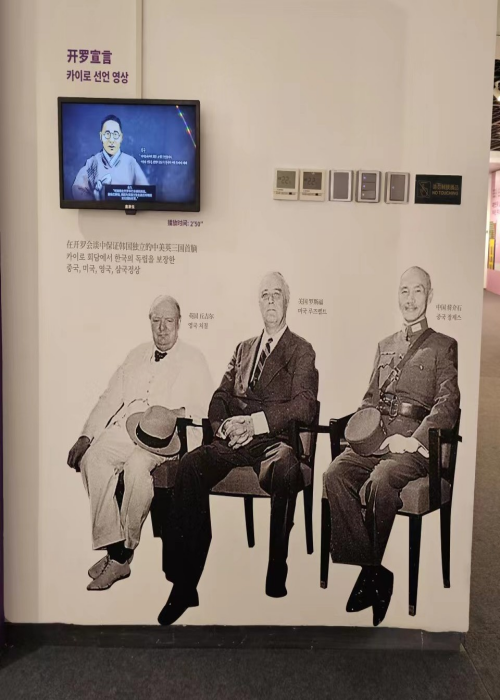
The Cairo Declaration of 1943 pledged independence for the Korean Peninsula. Shown from left are British Prime Minister Winston Churchill, U.S. President Franklin Delano Roosevelt and Chinese leader Chiang Kai-shek.
Amid the KPG's struggle for independence, China gave crucial aid and continued such support through financial assistance and military envoys to facilitate the KPG's return to Korea. Since 1992, Korea and China have jointly sought to identify and preserve historical sites linked to the KPG as monuments symbolizing their enduring friendship.
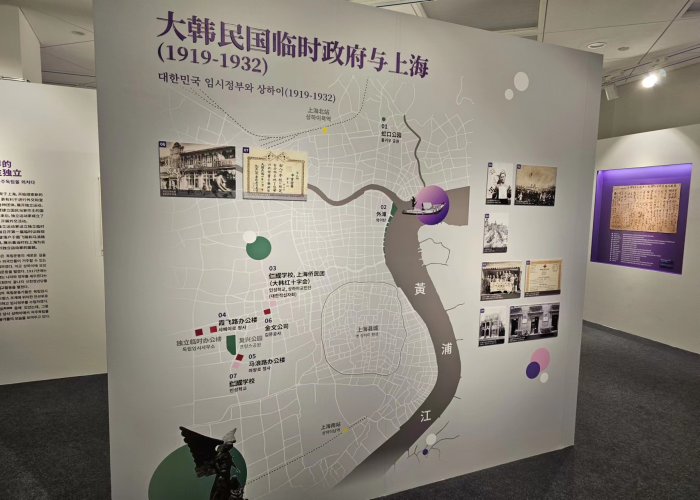
The KPG was located in Shanghai from 1919-32.
Thus I was moved by visit to the exhibition after learning about the KPG's sacrifice for independence, governance challenges and enduring friendship between Korea and China. To me, it emphasized the importance of preserving history, promoting peace and fostering development of today's world.
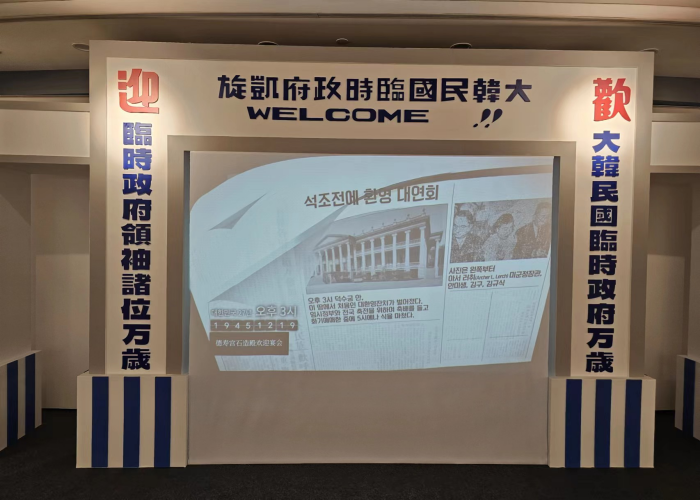
This display shows how the KPG in 1945 was welcomed back to Korea after national liberation.
msjeon22@korea.kr
*This article is written by a Korea.net Honorary Reporter. Our group of Honorary Reporters are from all around the world, and they share with Korea.net their love and passion for all things Korean.
Most popular
- Grammy-winning producer calls Suga of BTS 'amazing artist'
- 'Universal love, family' themes fuel success of 'King of Kings': director
- Council sets minimum hourly wage in 2026 at KRW 10,320
- Expansion of foreign app system raises tourist convenience
- Nat'l population diversity rose nearly 8% from 2018-22: study
